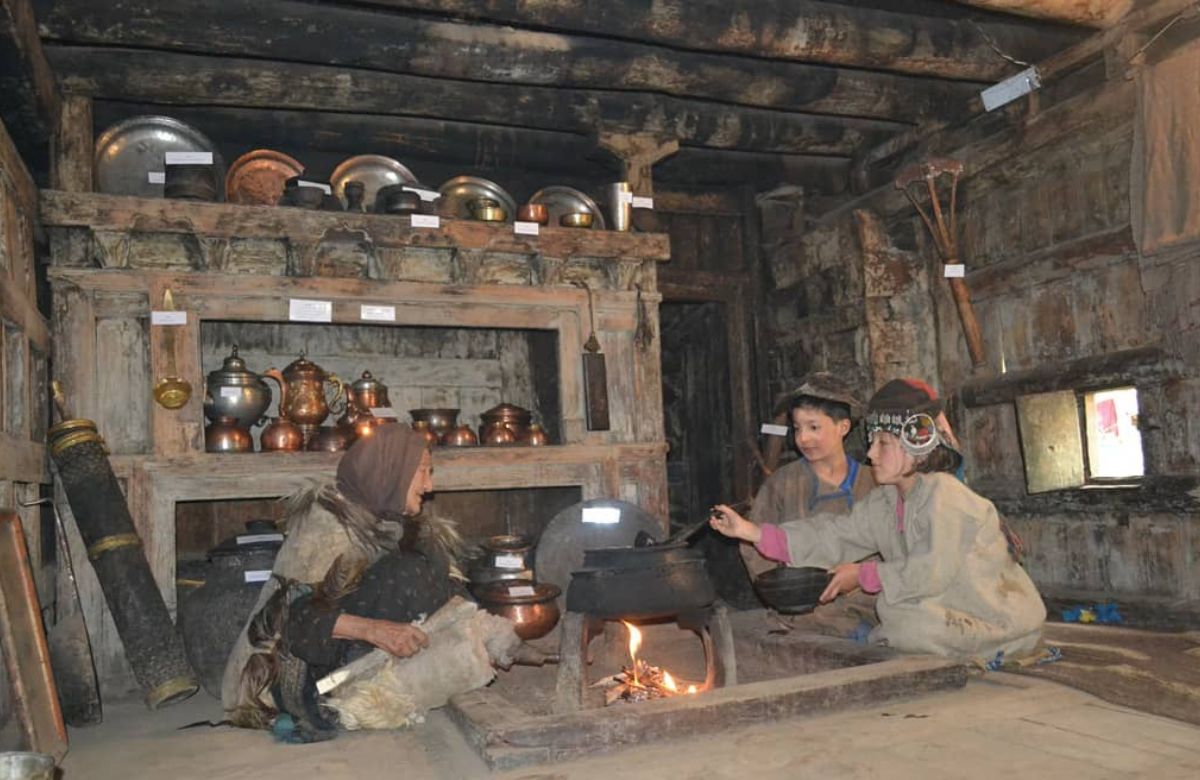A picturesque village nestled in Ladakh, Turtuk’s history is a tale of twists and turns. But, the Balti people residing in this mesmerising landscape have preserved their unique traditions, language, and way of life over centuries. Until 1971, the village was a part of Baltistan, which was then a region of Pakistan. The Balti Heritage House and Museum is a cultural institution of the Balti heritage, nestled in the heart of this region.
In Balti Heritage House And Museum, Turtuk
The 140-year-old mansion museum is a plain white building constructed in the classic Balti style. The museum is run by a family and is actually someone’s house built into a museum. Belonging to the Ashoor family, the house was constructed in the 19th century. However, the idea of setting up a museum inside came much later.
Determined to safeguard the vanishing cultural heritage of the Balti people, these dedicated individuals sought to create a space that would celebrate Balti culture. The museum acts as a repository of artefacts, exhibits, and knowledge that spans centuries.
The Balti people have a deep-rooted history that stretches back thousands of years. The Balti region served as a crucial gateway for ancient trade routes, connecting Central Asia, Tibet, and the Indian subcontinent. Throughout history, Baltistan has been influenced by various cultures, including Tibetan, Indian, and Central Asian, leading to a unique blend of traditions and practices.
Also Read: From Tarsar Marsar To Gurez, Kashmir Has Launched Trekking Expeditions!
Preserving The Treasures Of An Ancient Culture
The Balti Heritage House itself is an architectural marvel, reflecting the traditional Balti style of construction. The building’s design incorporates intricate wood and stone carvings that add an ethereal charm to the structure. This architectural splendour not only pays homage to the Balti heritage but also serves as a compelling attraction for tourists and visitors.
The museum collects, preserves, and showcases a wide range of historical artefacts, including traditional clothing, tools, agricultural implements, religious artefacts, musical instruments, and household items. Each item holds a unique story, illustrating the lives and beliefs of the Balti people. One section showcases the daily life of the Balti people, including their unique clothing, culinary traditions, and agricultural practices.
The Balti Heritage House and Museum stands as a living repository of the Balti people’s rich cultural legacy.
So, have you bookmarked this beautiful place?
Cover image credits: Instagram/Balti Heritage House and Museum

